Long Beach (2019)
The City of Long Beach is in the process of updating its Historic Context Statement. As part of this effort, they sought community input. As I was awarded an RFP for community engagement with the City, I worked closely with them to do this outreach!
Over the course of the project I translated design recommendations from City staff into a project website, created a program to train community ambassadors, and trained ambassadors to speak on the project and organize neighborhood meetings.
Over the course of the project I translated design recommendations from City staff into a project website, created a program to train community ambassadors, and trained ambassadors to speak on the project and organize neighborhood meetings.
Naming, Brand Identity, and Website
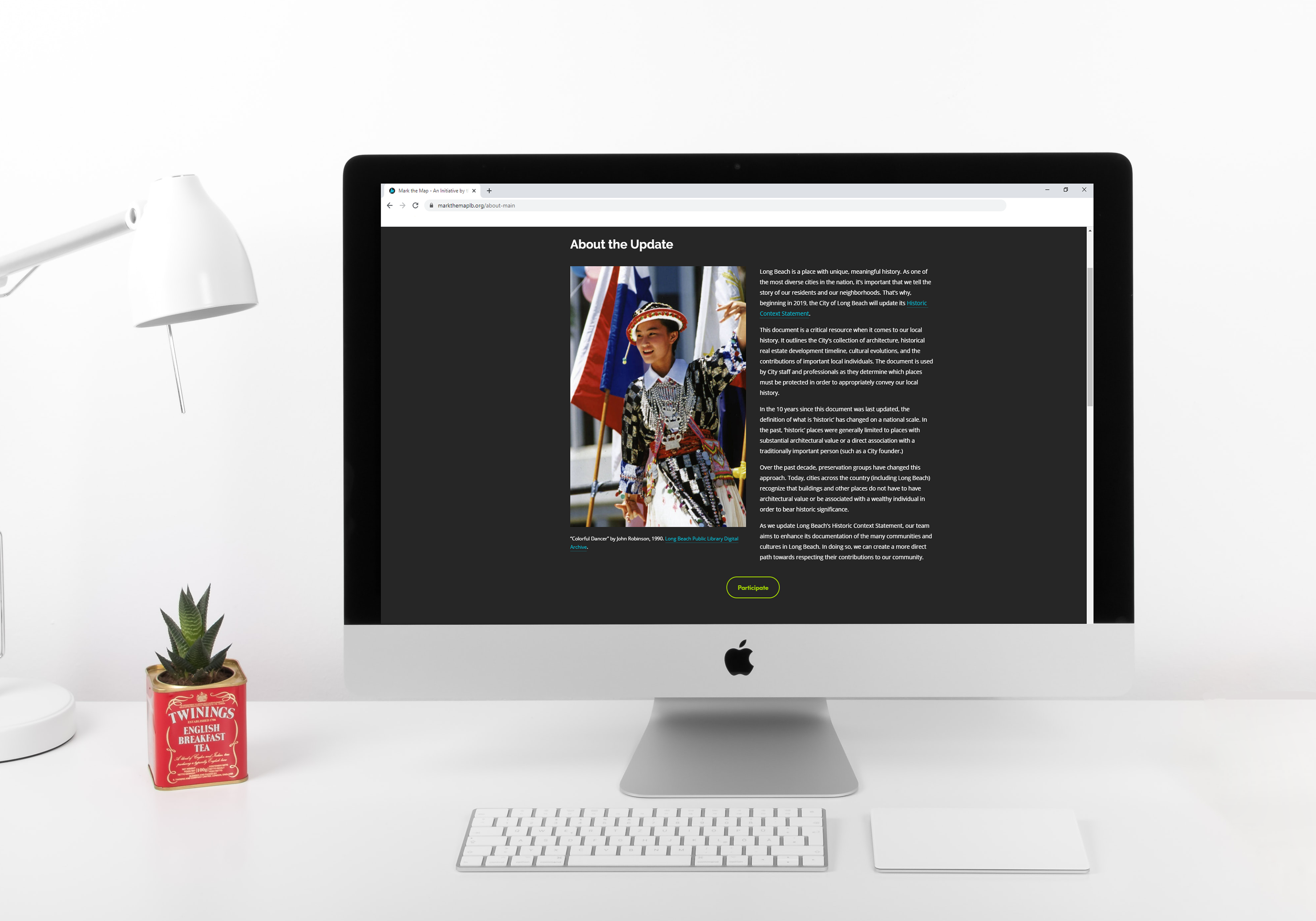
The Mark the Map project website in action
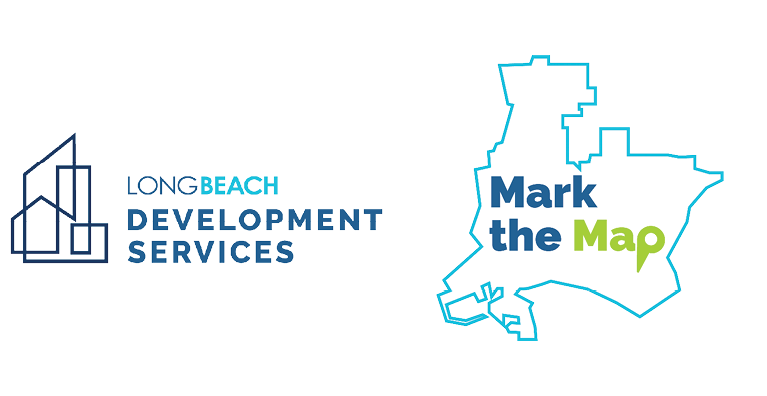
I created the project name and recommended the use of the City of Long Beach map silhouette in the logo. Graphic Design staff at the City built upon these elements to create a brand identity to correspond with the existing logo for Long Beach Development Services.
For years, the City of Long Beach has used this map graphic to show historic places in city limits, and its cropped format excluded entire neighborhoods.
Our team named this community outreach project, "Mark the Map," in hopes it would encourage residents to help us identify places across the City that could expand how the City views its landscape through the eyes of history.
Considering the design requirements and requests from City staff, I used SquareSpace to create a website that could represent the project and give residents an outlet for participation.
Explore the project website at markthemaplb.org
------
Ambassador Training Program
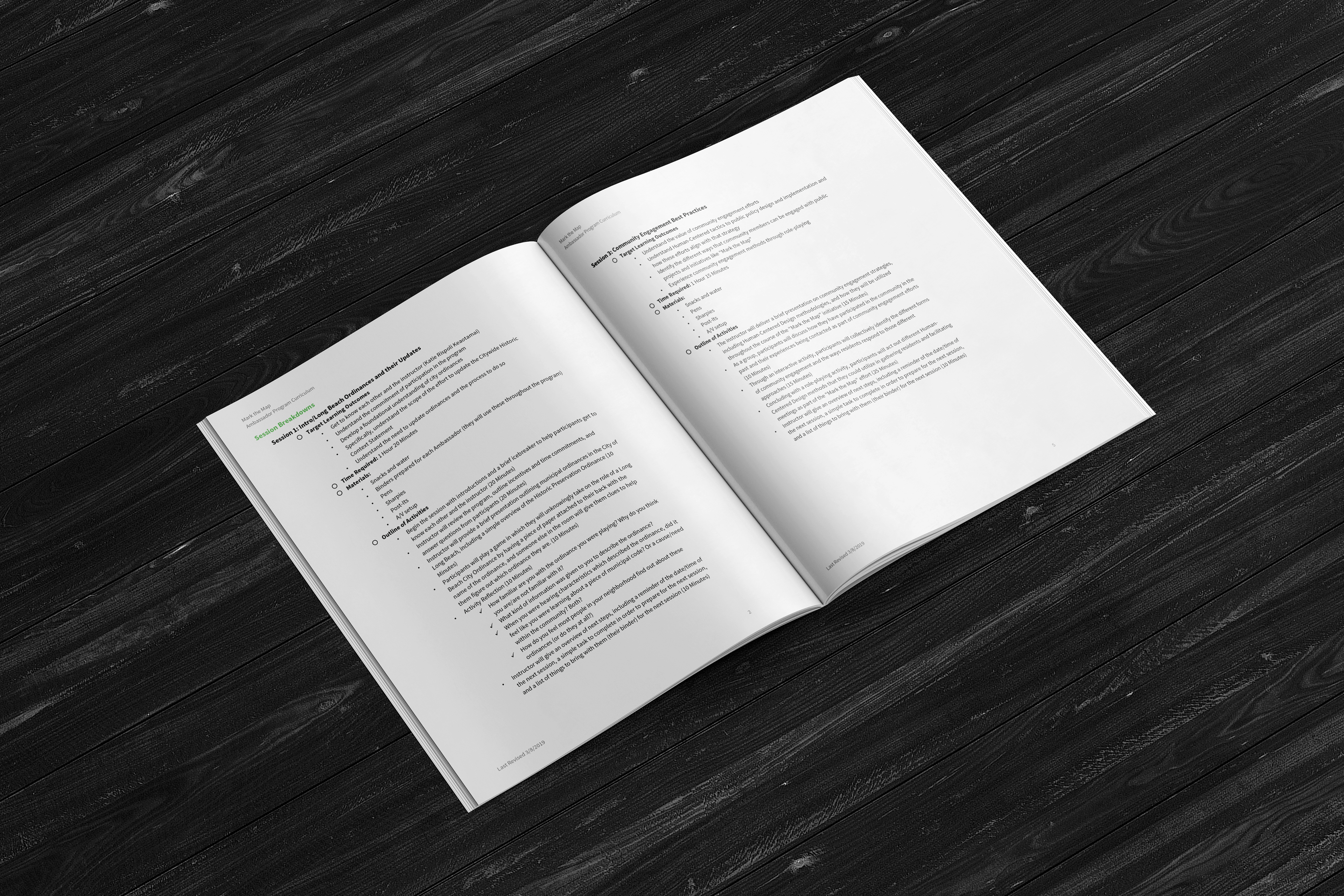
The program required community ambassadors to participate in a series of four trainings, outlined in these lesson plans.
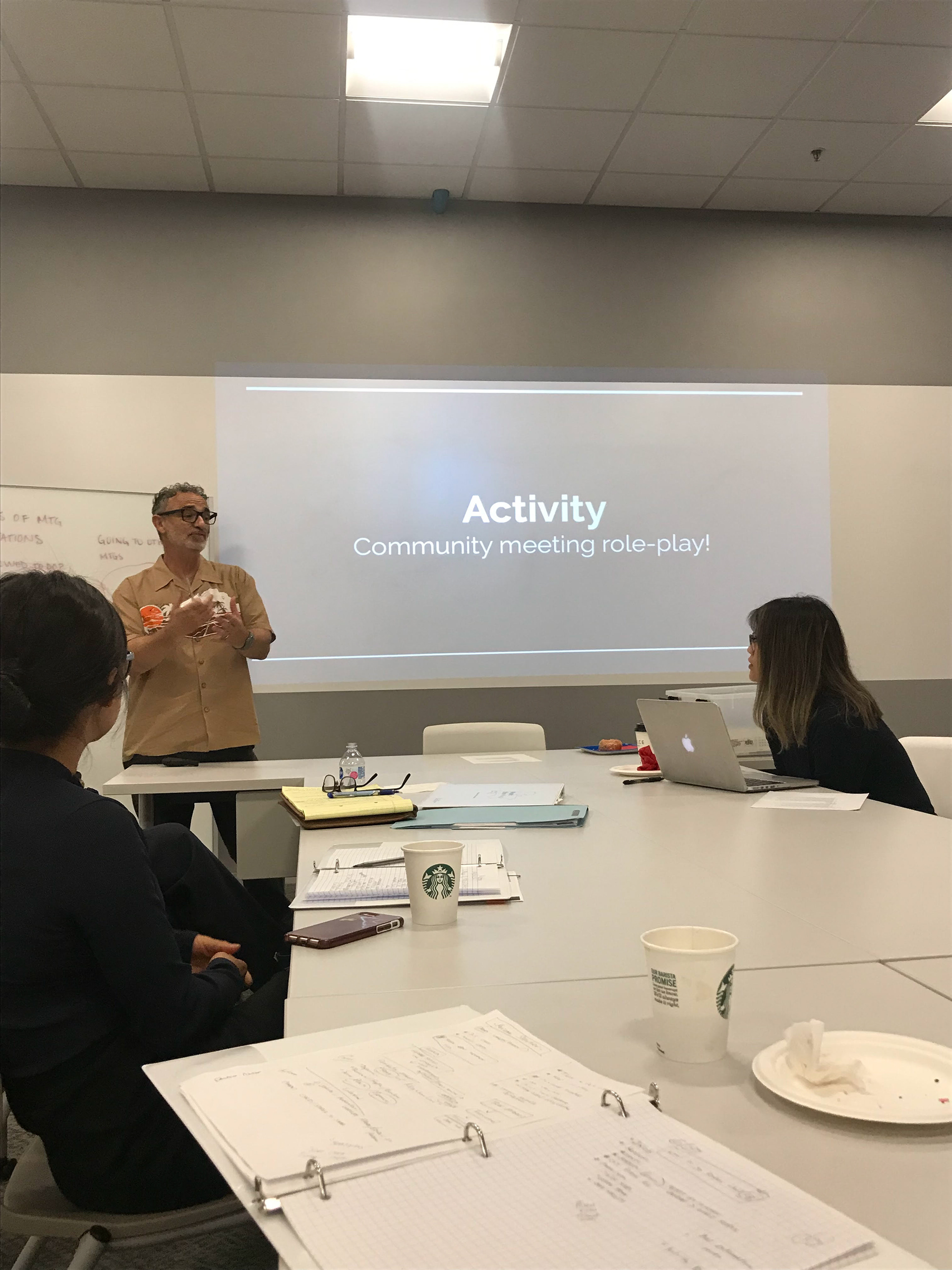
Participants complete a mock community meeting at their fourth and final training
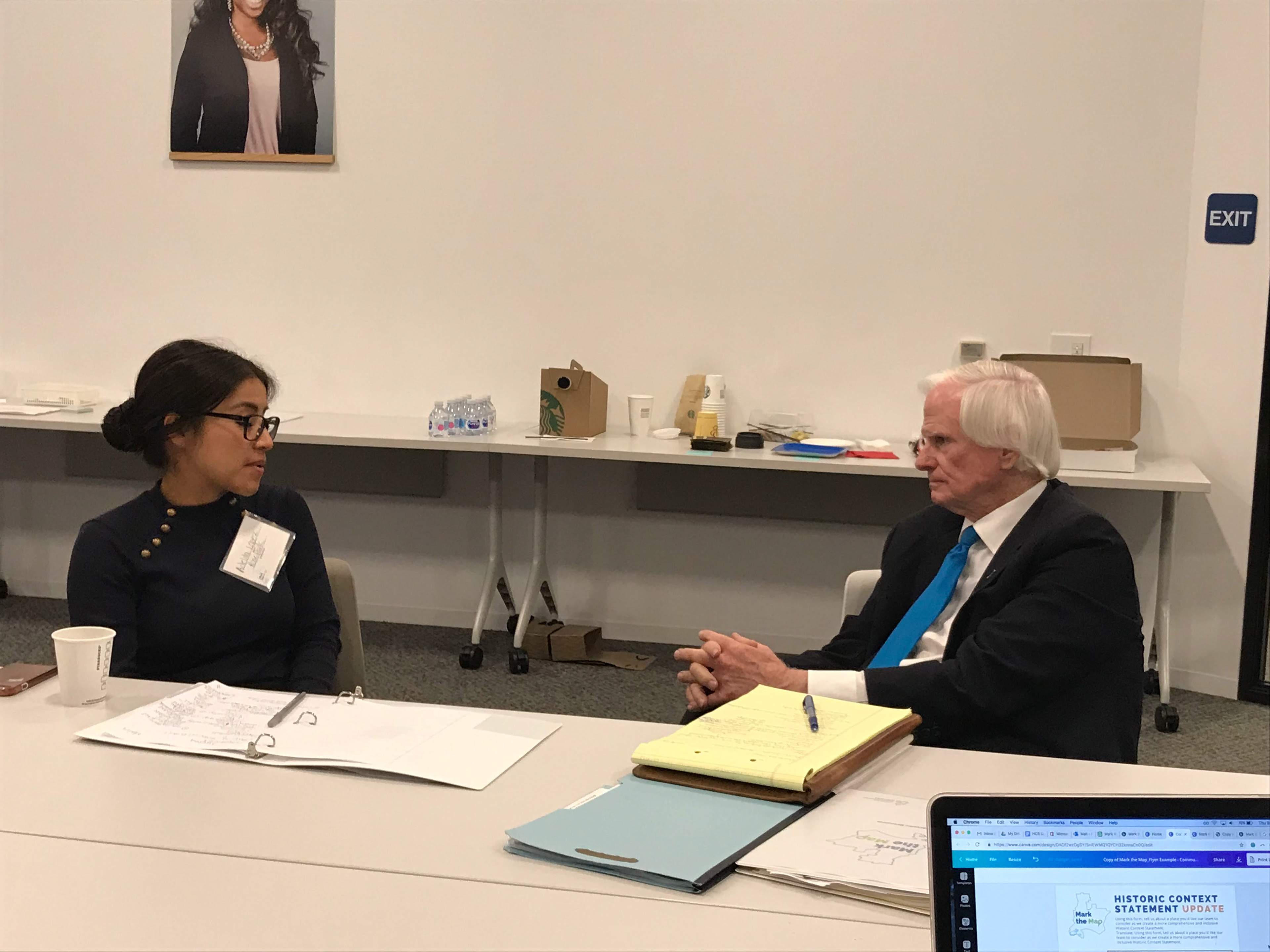
Ambassadors role play to prepare for resident questions and interactions
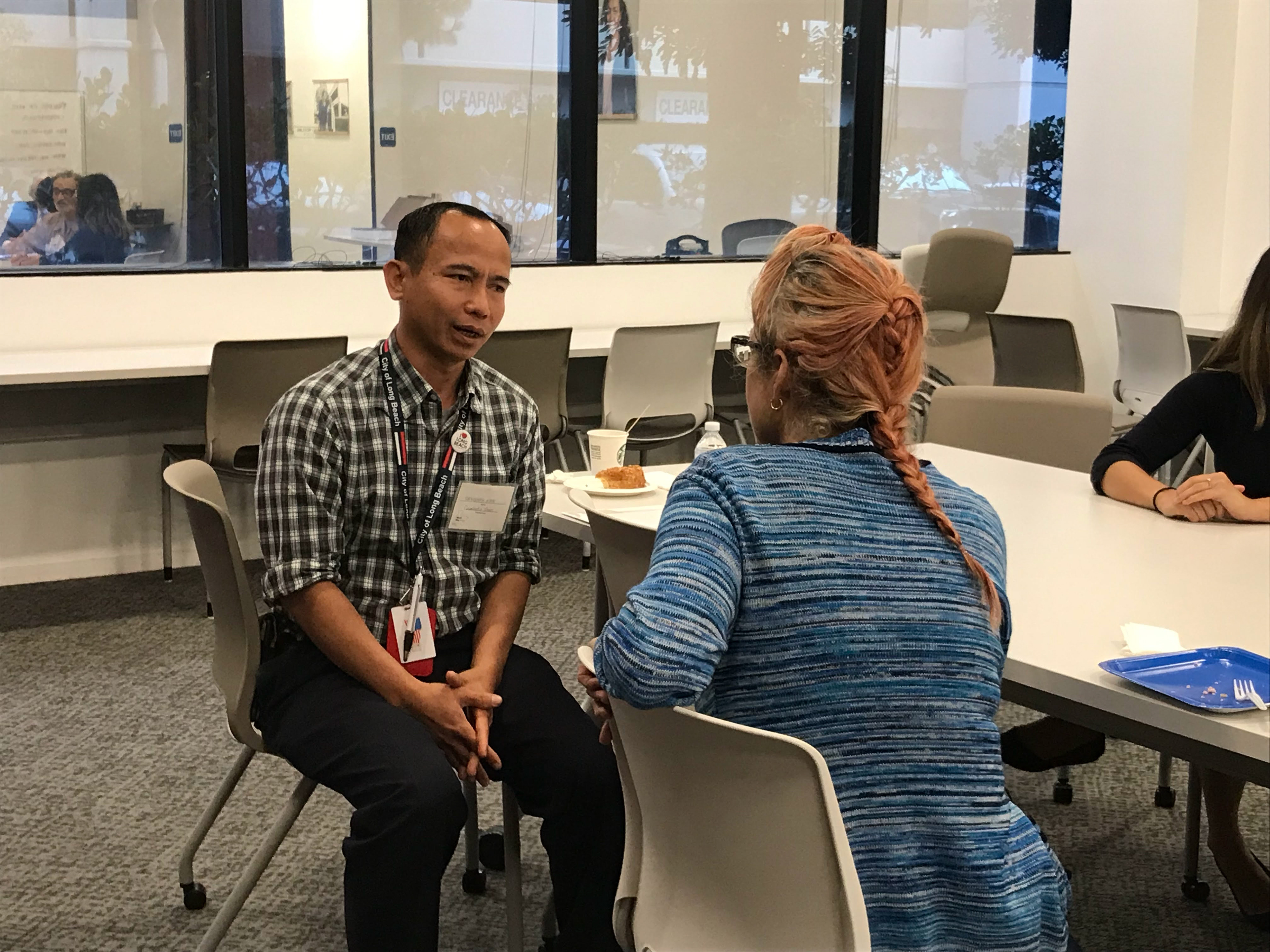
Ambassadors role play to prepare for resident questions and interactions
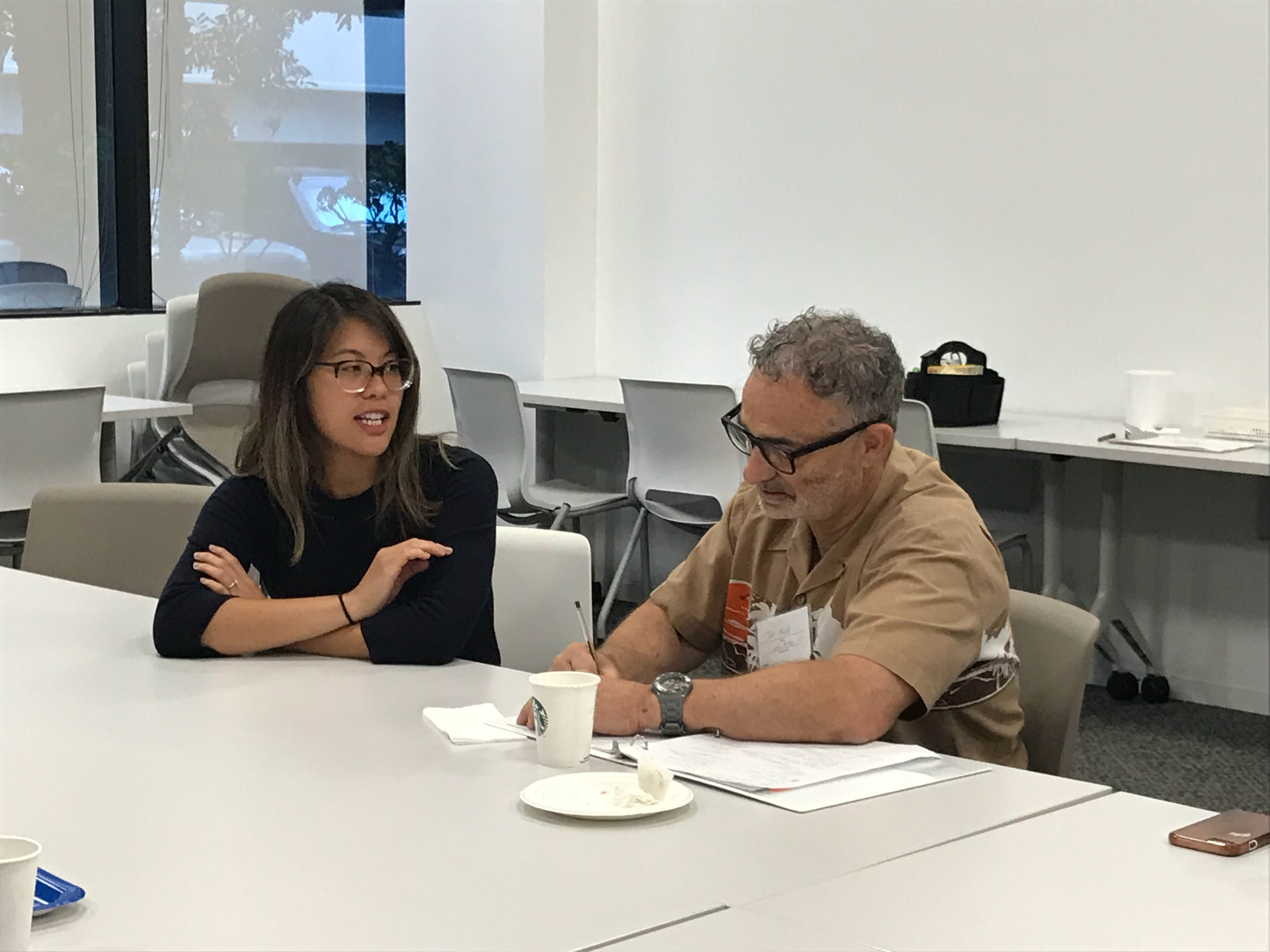
Ambassadors role play to prepare for resident questions and interactions
We began this project on the heels of a very contentious update to the City's Land Use Element. Traditionally, City staff and consultants would visit community spaces to share news of the project and seek participation. However, we felt our message would be best received if it came directly from local residents.
I crafted a curriculum centered around human-centered design principles, and worked with local neighborhood and business associations to recruit a number of community ambassadors! I led four training sessions for the ambassadors. After completion of the program, they were given materials and supported by City staff in order to host outreach meetings in their own neighborhoods.
This strategy ultimately resulted in greater engagement among neighborhoods that do not traditionally participate in city outreach events, and encouraged participants to build alliances with each other and their associations!